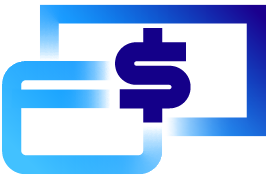I hope you had a great Labor Day weekend – and dried out from all the rain last week!
- It was great to see so many people at the Orion Ascent conference last week in Arizona. It was really a special event in so many ways. Thanks to everybody for making it happen, from our Orion Events team to our colleagues, our partners, and most importantly our clients.
- Last month was also another strong month for the markets, as it ended up being its 7th consecutive monthly gain for the S&P 500, its longest winning streak since 2017.
- Last week was also a decent start to September too, with the overall US market up nearly 1% for the week. Large caps and growth outperformed. Interestingly so did emerging markets and real assets (such as REITs and commodities).
- More “technical” (I.e. “price-based”) tidbits:
- Old Mission Capital reported that the S&P has also closed above its 200-day moving average for 296 days in a row.
- Strategas reported the S&P’s +20.4% performance through August ranks 6th best since 1950, trailing only 1987 (+36.2%), 1975 (+27.7%), 1989 (+26.5%), 1995 (+22.3%), and 1997 (+21.4%).
- Here’s something that might be surprising. According to research from Bespoke Investments, last week marked the one-year anniversary of the technology sector's peak relative strength versus the S&P 500. Granted tech has been outperforming again the last few months, but it will likely need economic data to keep slowing, the Delta wave continuing to surge, and the FOMC remaining easy.
- Happy Rosh Hashanah! Did you know there is a trade called “sell Rosh Hashanah, buy Yom Kippur”. According to Old Mission Capital, historically in the 10 days between the two, the market has gone down 27 times over the past 50 years. But the dates usually fall in September, which is considered the weakest time of the year for the stock market. Since 1896 the month of September has averaged a return of -1.05% versus an average gain of 0.75% for the other months of the year.
- Counterpoint to the seasonals concern, Strategas also reported this cool tidbit: “September performance has generally been a coin flip, but 8/31 to 12/31 returns have historically skewed positive following such a strong opening 8 months of the year. When the Index stumbles in September, it’s always easy to blame notoriously weak seasonality – and while this tends to be one of the softer months of the year, our work has found that the underlying trend of the market is a strong influence on the calendar. The worst Septembers have historically come when the S&P was already in a downtrend… obviously not the case today. Otherwise, seasonal consolidations / corrections have generally been buyable this time of year.”
- There are also news events to deal with from the weather, Afghanistan, and of course COVID. All of these have caused and are still causing terrible suffering. Thankfully at least the COVID numbers seem to be improving. First Trust's Weekly COVID Monitor.
- The big economic number last week was the August Non-Farm Payrolls on Friday. Nonfarm payrolls increased 235,000 in August. Consensus expectations were 733,000. This was the slowest growth this January. Average hourly earnings did rise 0.6% in August and are up 4.3% versus a year ago. There are silver linings to this report though. Again, according to First Trust, civilian employment, an alternative measure of jobs that includes small-business start-ups, increased 509,000 in August. As a result, the unemployment rate declined to 5.2%, the lowest levels since the COVID pandemic started. Perhaps another silver lining is the early September withdrawal of excess benefits should spur a rush by the unemployed to fill many of the record-high 10.1 million job openings around the country. The US labor market has a long way to go for a full recovery, but it is on track in spite of the relatively slow payroll growth in August. Look for a rebound in the pace of job growth in September.
- Another worry for investors is still inflation. Last week for instance, the S&P/Case-Shiller housing price index rose over 19% year over year, the largest increase in the series’ history going back to 1987. Another concern is that Consumers see inflation at 6.8% over the next year.
- Speaking of inflation, not a lot of big economic numbers this coming week, but perhaps the big number is the Producer Price Index (PPI) for August. The consensus is for a 0.6% increase in PPI, and a 0.6% increase in core PPI.
- Despite all this inflationary news (noise), ten Year Treasury Yields were basically unchanged last week. That said, as of this point they are at 1.37%. If they were to close at this level, it would be their highest yields in nearly 2 months (July 13th).
- Changing gears, the ETF industry is on fire. Goldman Sachs reported these ETF industry highlights last week that included JPMorgan announcing they will convert four mutual funds into ETFs early next year – involving about $10B in assets. Capital Group plans to launch a slate of ETFs in Q1. ARK filed for a Transparency ETF based on an index of 100 companies deemed most transparent – excluding vice industries, oil and gas, banking and others. Also, a Bitcoin ETF could soon be a reality with SEC Chair Gary Gensler signaling he would be more receptive to a Bitcoin ETF if it would be futures-based.
- Speaking of Bitcoin, Bitcoin hit its highest levels since mid-May breaking back above $50k again. El Salvador officially adopted Bitcoin as legal tender today. For those who might want some fresh educational material, Eaglebrook just published What is Bitcoin?. As of this writing, BTC is at $51k.
- Something else that is surging is the demand for financial planning that addresses both the immediate and long-term goals of clients. To encourage advisors to volunteer their expertise in a time of extraordinary need, Orion is offering its financial planning technology, Orion Planning, and its data aggregation services free to advisors with pro bono clients. You can take advantage of this offer by signing up for our training webinar via the link for Orion Financial Planning .
- Why we do what we do – help advisors close investors’ Behavior Gap. As Orion’s Eric Clarke said at the Ascent conference (and many other places), our mission is to help solve the investor problem and improve investor returns. The latest Morningstar “Mind The Gap” report is out. In short, according to Morningstar: Our annual study of dollar-weighted returns (also known as investor returns) finds investors earned about 7.7% per year on the average dollar they invested in mutual funds and ETFs over the 10 years ended Dec. 31, 2020. This is about 1.7 percentage points less than the total returns their fund investments generated over the same period. This shortfall, or gap, stems from inopportunely timed purchases and sales of fund shares, which cost investors nearly one sixth the return they would have earned if they had simply bought and held.
- This week on Orion’s The Weighing Machine podcast, our guest is Manish Khatta from Potomac Fund . Manish is known for his disruptive style of investing and marketing. Fun interview.
- For more resources, please check out the Financial Advisor Success Hub, and as always, please let us know what we can do better at rusty@orion.com or benjamin.vaske@orion.com.
2428-OPS-9/8/2021
The CFA is a globally respected, graduate-level investment credential established in 1962 and awarded by CFA Institute — the largest global association of investment professionals. To learn more about the CFA charter, visit www.cfainstitute.org.
The CMT Program demonstrates mastery of a core body of knowledge of investment risk in portfolio management. The Chartered Market Technician® (CMT) designation marks the highest education within the discipline and is the preeminent designation for practitioners of technical analysis worldwide. To learn more about the CMT, visit https://cmtassociation.org/.

















